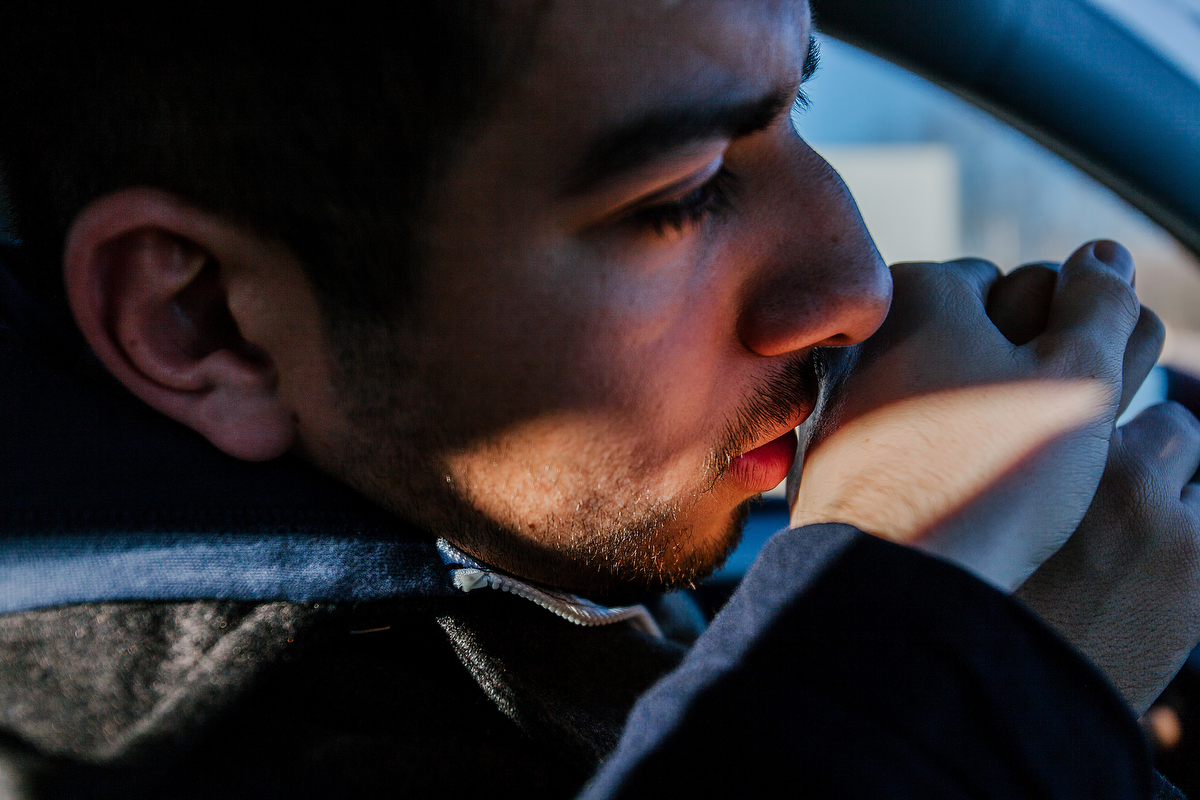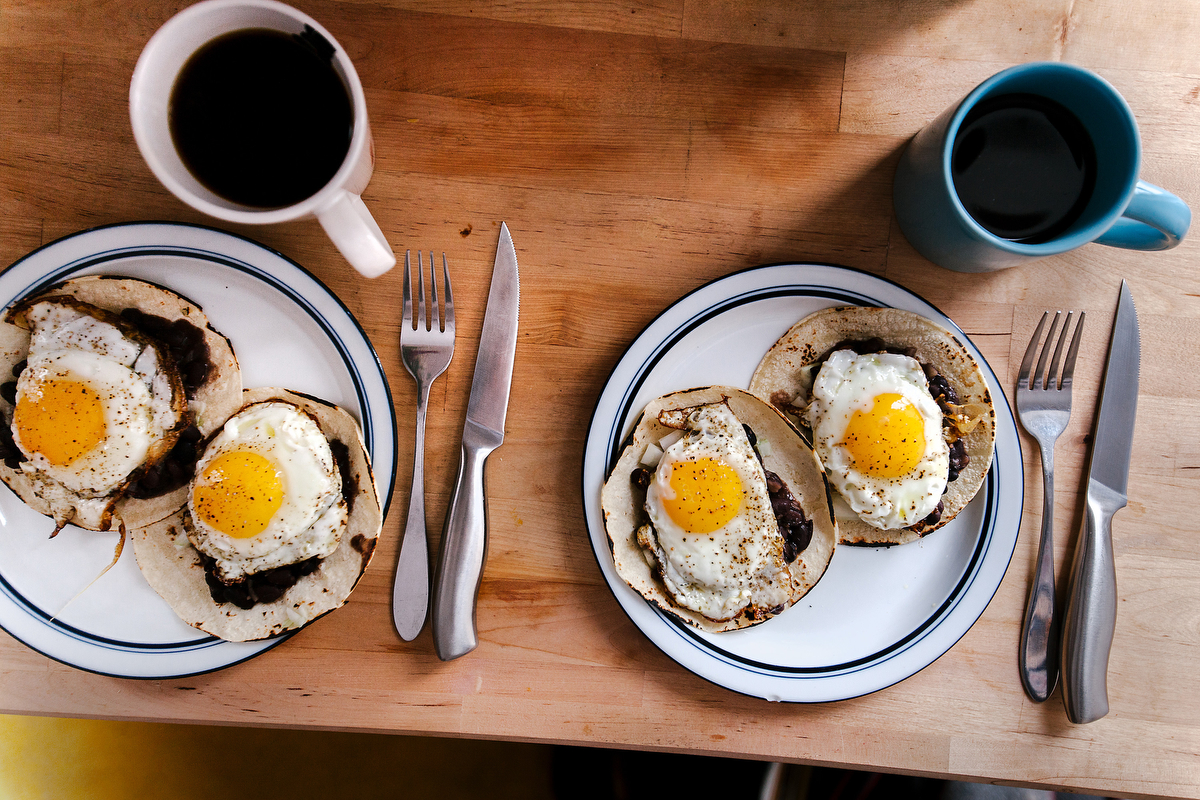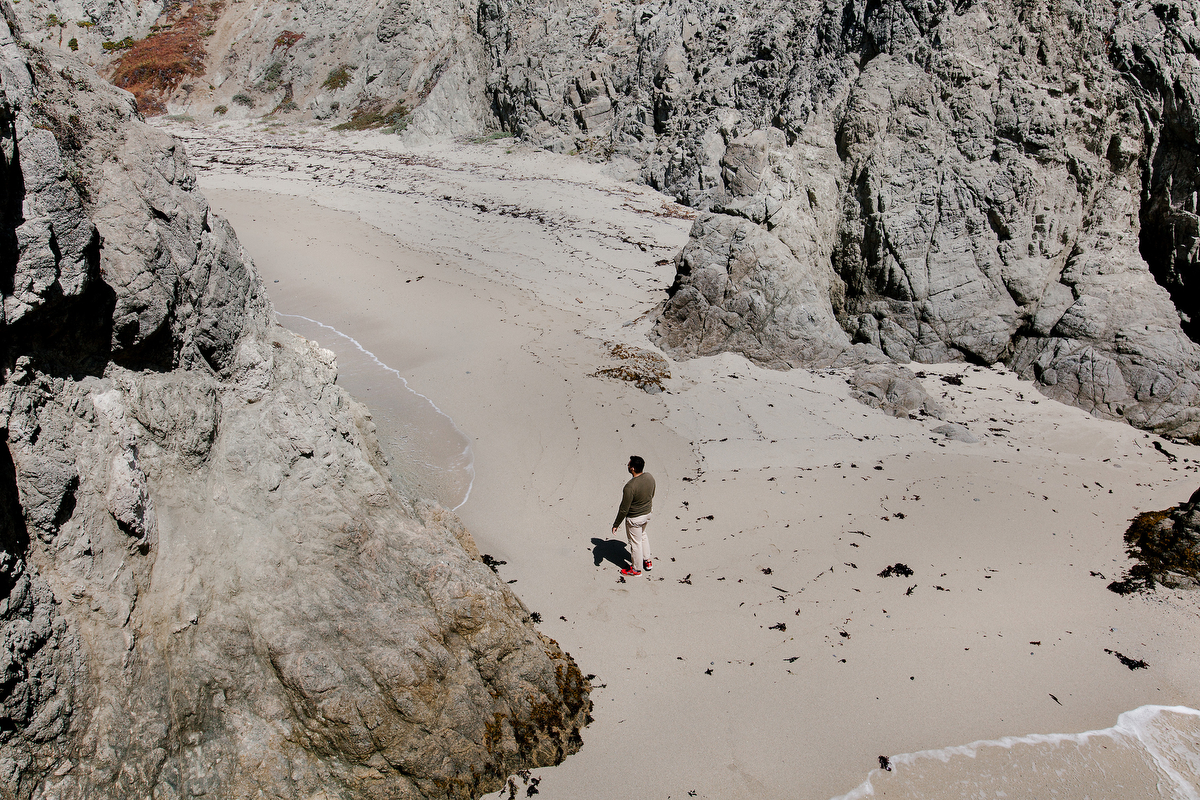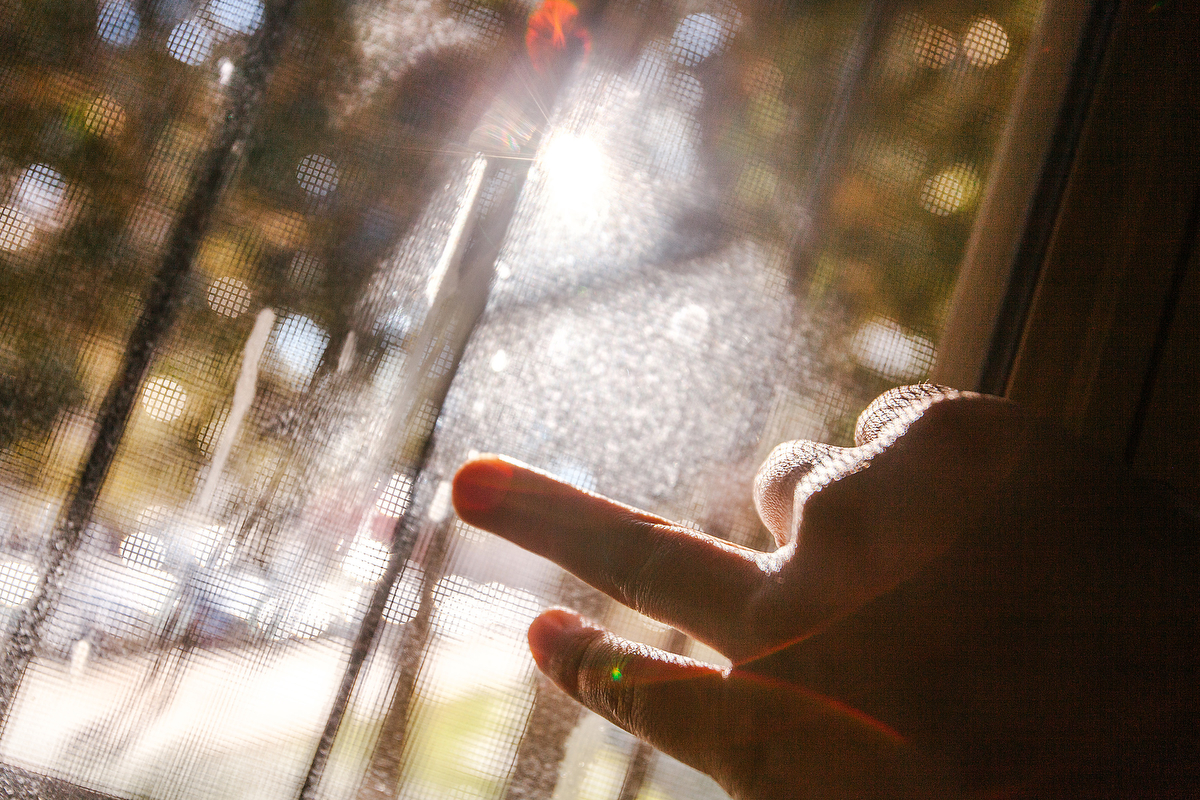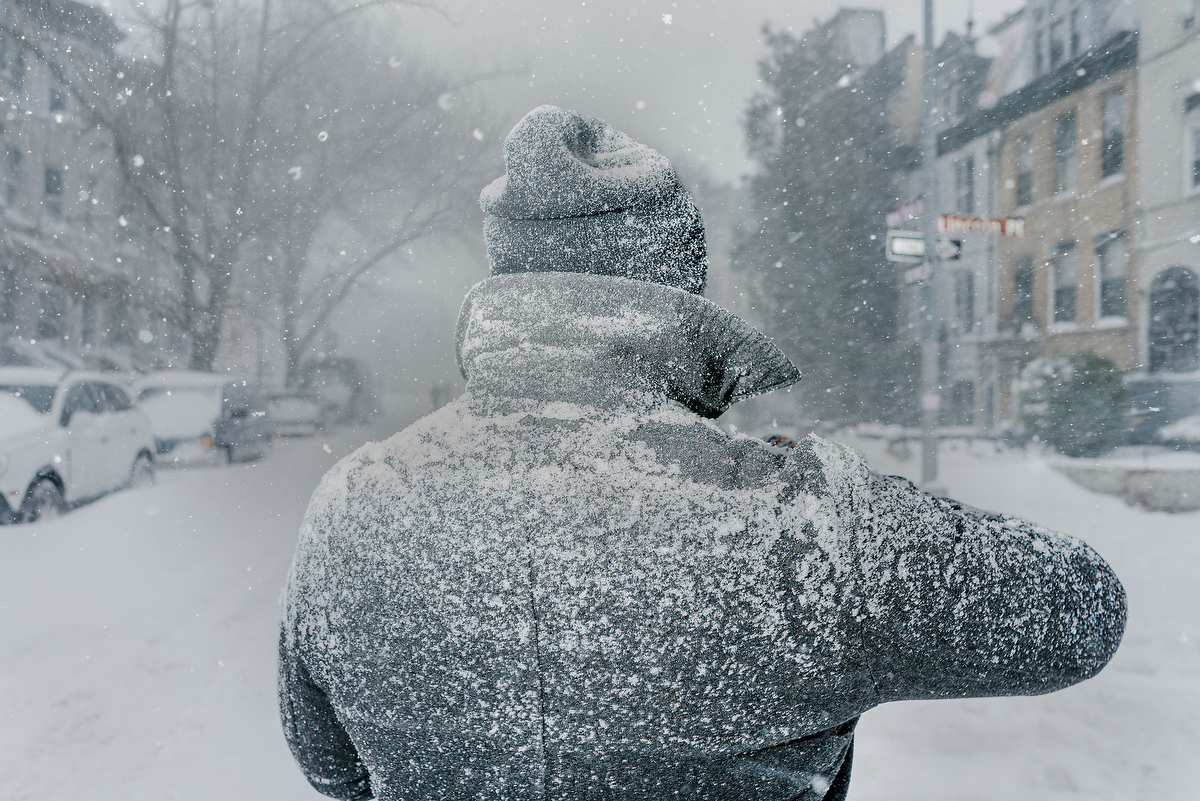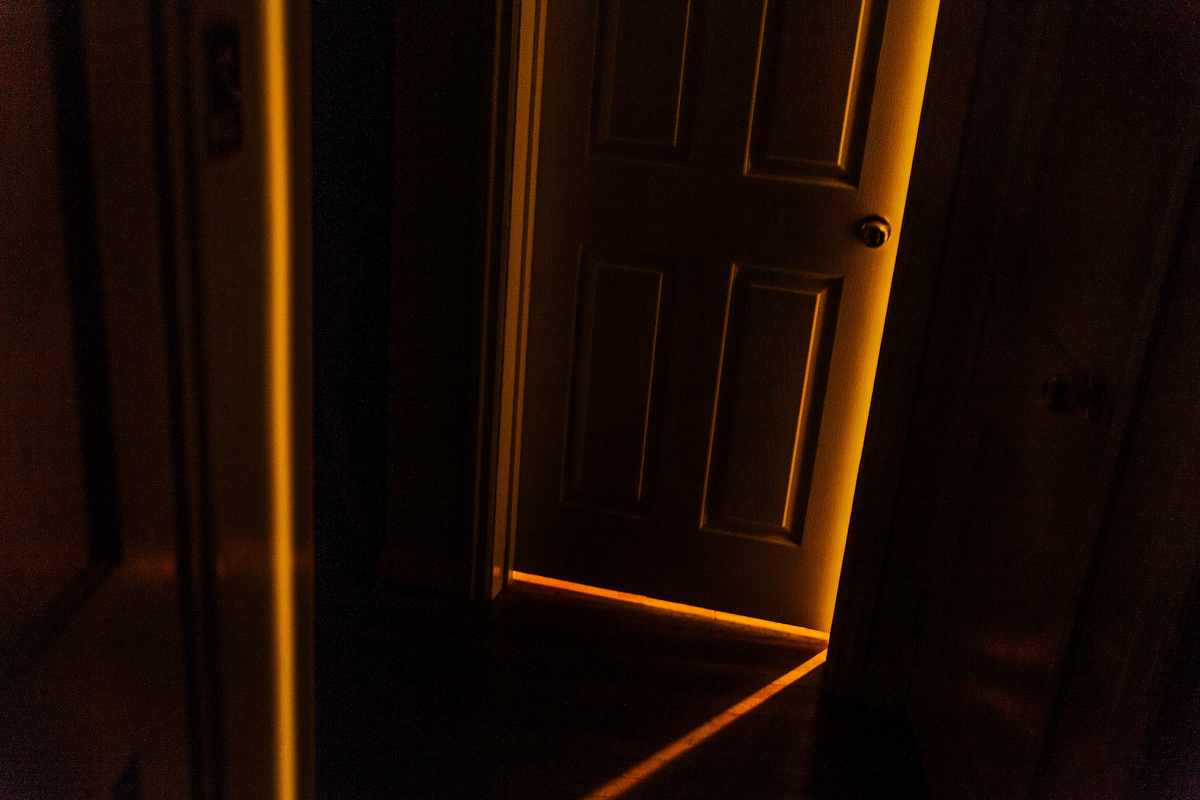Q&A: jake naughton and juan anibal sosa iglesias
By Jess T. Dugan | May 2, 2019
Jake Naughton is a documentary photographer based in Mexico City, making work about queerness in the present moment. His other projects explore the rhythms and challenges of the LGBTQ community around the world, from LGBTQ refugees in East Africa to a strange limbo for the queer community in India. But throughout his career, he has also been making work much closer to home.
He is the recipient of the inaugural Emerging Photographer Project Grant from the Magenta Foundation, an artist fellowship from the New York Foundation of the Arts and multiple grants from the media nonprofit the Pulitzer Center. He has been a nominee for the Tim Hetherington Trust’s Visionary Award, the Joop Swart Masterclass by World Press Photo, a finalist for the Art Director’s Club Young Guns Award and a two-time finalist for the Robert Giard Foundation Grant in photography. He was named one of Photo District News’ 30’s New and Emerging Photographers to Watch in 2017, and his work has also been recognized by American Photography and by Magenta Foundation’s Flash Forward prize.
Alongside his artistic practice, he also makes commissioned work. His clients include the New York Times, Instagram, the Smithsonian Institution, VICE Magazine, Wired Magazine and Pentagram. His work has been exhibited in the USA and internationally, most recently at United Photo Industries in Brooklyn, which mounted an exhibition of When We Were Strangers from Feb 14 –March 22, 2019.
Juan Anibal Sosa Iglesias recently received his Master’s degree in Conflict, Security and Development from King’s College London. Prior to this, while working at the Legal Aid Society, he advocated for unaccompanied children escaping violence in Central America and defended them in U.S. immigration court. Originally from El Salvador, he came to the United States as a child, fleeing the civil war in his home country.
Though not a professional photographer himself, he has been involved in this project at every level, from making photographs included in the book, to sequencing its pages, to ensuring that all aspects of our relationship were documented and represented in the project and the book.
Jess T. Dugan: Hello Jake and Juan! Thank you so much for taking the time to speak with me today. Before we jump in to talking about your new book, When We Were Strangers, let’s take a step back for a second. When did you two meet? What has your journey been like as a couple?
Jake: Hey Jess — thanks! We’re excited to chat about the work and the book.
We met in 2011, when we were both living in Washington, DC, on the dating site OKCupid, before online dating was really a thing. We lived together in DC for a bit, then were long distance while I was in NYC for grad school and then Juan joined me there. From there, we moved to London for Juan’s Master’s and then to Mexico City, where we are now.
Like many relationships, we’ve had our ups and down, and it’s been full of lots of learning about ourselves and one another. Also a real honest and sustained effort to grow and change, and to give one another the freedom to pursue our individual paths within the context of our relationship.
Jess: Tell me about When We Were Strangers. How did this project begin?
Jake: When Juan and I met, I was an intern with dreams of becoming a photographer. Almost right away, I started photographing him, and us. The early pictures were not really about anything; they were borne out of an almost subconscious drive to make images of this heady experience of falling in love.
It continued in that way for a while, but things started to have a more clear direction once I started grad school, and my professor at the time, James Estrin, pushed me to take the work more seriously
At the same time, being long distance forced Juan and I to be more intentional about our relationship, to cultivate the partnership we wanted.
What started as an unconscious impulse became something deeper — a collaborative and deeply intentional project to understand what it meant, individually and in general, to be in love.
Juan: At first, it felt a little bit invasive to have a camera in my face. In the beginning, there were a lot of times where Jake would photograph me, and I would just tell him to get the camera away from me.
But when we were long distance, during our times back together, it became more important for those moments to be captured to have as memories and records to look back on and to immediately share with each other to make it easier to be apart.
Jess: I’m interested in the process of projects that develop organically out of life experiences, particularly when the focus is on something very personal, such as a relationship. You mention that, in the beginning, you weren’t conceiving of this work as a “project”- can you expand on that a bit?
Jake: It didn’t start as anything besides a compulsion for me, and maybe an annoyance for Juan haha.
Juan: I think if I would have known it was going to be a project from the start, I don’t think I would have participated, or at least been frustrated. Because I wouldn’t have felt like things were developing organically, and things would have been too posed. But with it developing over time, it made me feel comfortable in front of the camera, but it also made me feel comfortable taking the camera too and taking photos, and also having ownership over the project.
Jake: Yeah, because the work developed in real time alongside our relationship, it grew and changed as we did. And as Juan got more comfortable in the world of photography (and as I entered it more fully) it became a really collaborative effort.
Jess: At what point did you realize it needed to become a book? What was your experience like attempting to distill eight years of photographs and memories down to a relatively small number of images?
Juan: First, the book represents the first five years of the work (and our relationship). The oldest photo in the book is from my 23rd birthday party, in June 2011, which so happens to be the cover of the book. And the most recent photo is from December 2016.
Jake: But to your questions, it was a huge task. The work hadn’t really ever been published before. We were waiting for the right time and the right format to encompass the depth of what we wanted to share.
But, the seeds were planted when I was getting coffee with Glenna Gordon, a photographer and a partner at Red Hook Editions, back in October, 2016. She mentioned that if we were ever interested in making the work into a book, Red Hook would love to consider it. Then, a few months later, you convinced me to take a critique class with Sasha Wolf, which really helped hone the concept of the work from “a relationship” to something more cohesive and with a clearer point of view. It’s from there that the narrative of When We Were Strangers really took hold.
Juan: Yeah, for me the turning point really was seeing how excited and energized Jake was after Sasha’s class and how we saw a clear way forward.
Jake: From the early days of us seeing this work as a project, we knew we wanted to explode cliches about love through this work about our own relationship, but it’s been a process of refining that concept.
So throughout 2017, Juan and I talked a lot about what a book could and should look like and what the frame should be. I worked on whittling down the full take of the project, which has more than 10,000 images, via successive edits, and when I had around 400 images, Juan came on board in a big way and we started to edit and sequence together.
In December, 2017, we formally proposed it to Red Hook and then the real work of bookmaking began.
Jess: Could you talk about your experience working collaboratively? Were there any particular instances where you disagreed on whether a certain photograph should be made, included, published, or exhibited?
Jake: I don’t know that we disagreed often, but it definitely happened. There were also a number of times where I would be making a picture of Juan while we were out or doing something, and he would basically say, “That’s enough. Let’s enjoy being here now.”
But, there were just as many times when Juan would say to me, “Hey, go grab your camera because I want to make sure this moment gets included.” More often than not in these instances, it was a fight, or something that complicated and deepened (and made more accurate and comprehensive) the portrait of our relationship, and our experience of love, that we were making.
Juan: For me, my favorite part of actually making the book was really seeing the 4x6 photos of the larger edit, having them out on the dining room table and building the book’s sequence that way. We had around 100 prints in an ever-changing grid on our dining room table. I loved waking up, seeing the photos, rearranging them and then going to class and coming back and seeing how Jake had changed them. We always explained to one another why we made the changes we did and the edit really came together that way.
Jake: When it came down to most of the decisions about the project, from what things to photograph, to what images made it into the book or the exhibition, to other details, they were all made together. We might have disagreed over things here and there, but in general, it was a collaborative process with both of us really engaged throughout.
Jess: Juan, I’m particularly interested in your experience as someone who is not a professional photographer but who was intimately involved in the creation of this work. Could you expand on your experience?
Juan: One of the reasons I was attracted to Jake in the first place was because he is creative, he loves art, and throughout our relationship he has always tried to teach me about art, from simple things like talking about famous work in museums to bringing me along to more avant-garde things.
So, I’ve slowly become a part of that world and learned more about making pictures and being in them. For example, I don’t have to have a sad face for it to be a sad picture. My experience has been one of continuous learning and the opportunity to be creative, especially since my career isn’t a creative one.
And that boosted my confidence, and really made me feel like I had an important part in the project, which allowed me to be more transparent and confident in my feelings of “I don’t want a picture now” or “I want a picture now.” It really made me feel like I had a voice and this project was a joint project.
Since we didn’t have a set narrative for the book, I was very excited for Jake to take photos of everything, because for me, if it didn’t turn out to be a book, at least it would become our own set of memories.
But there were definitely moments where I said we need to document this, like a moment of tension we had in one night in our apartment, or other moments I didn’t discourage Jake from making a photo, like the image of me naked in a hotel room after a big fight.
As to making the book, it was easier than what I had anticipated and I think it’s due to the fact that we are in a relationship, and I learned by seeing Jake work how to talk about photography, about editing and sequencing, but still made sure to ask questions when I didn’t know what he was explaining. For example, the cover and exposed binding, I was confused with how some things would come together.
One of the important things is that we didn’t have a set schedule. The entire project came together when it came together.
Jess: In the introduction to When We Were Strangers you write:
“Love is a cliche, an idea so easy to imagine but impossible to grasp. Like an overripe fruit, it collapses with a bit of pressure into cloying sweetness and the faint scent of something lost. But, it is also perhaps our most essential endeavor. Mystical and dangerous, it is the inspiration for a billion journeys and a thousand petty conflicts.”
You have set out to picture something that is inherently impossible to picture, and many of the photographs in the book are poetic and highly emotive rather than being more documentary or descriptive. How did this contradiction – your desire to make work about something intangible and difficult to photograph directly – inform the photographs you made and chose to include in the book?
Jake: One of the great challenges of the artist is to take intangible human experiences and to distill them into something more tangible. That process of grappling to make real the unreal is at the heart of what we do, I think. Though I come from a documentary photography background, I take a lot of personal inspiration from fiction, painting and cinema, all of which make liberal use of metaphor and emotion to draw connections to and shed light on our lived experiences. I also knew there was a limit to what happy, sad, tense, etc. images of Juan and I could tell people outside of our relationship about love, and from the time we thought of this work as a project, Juan and I always wanted it to resonate with others and to mean something beyond ourselves.
We also didn’t want to create or follow any sort of chronology in the book. We aimed for an emotional, rather than narrative arc, as a way to be more open-ended and explore questions that have implications beyond just the two of us.
Jess: Talk to me about your use of text – throughout the book, there are short narrative writings as well as more singular sentences and questions printed on a translucent vellum. What was your thought process on both the creation and inclusion of text?
Juan: For me, the text started during sequencing of the dummy by me adding post-its to spreads and photos that were my reactions to images (we went through 6 iterations of the dummy). It made me realize that we were reacting to images differently, and was also a way to add context for people to understand what was happening and be able to draw conclusions to their own lives. But soon, it became a way for my voice to be heard more directly, and Jake and I worked to find ways each of our texts could complement what the other was saying, fill in gaps and share our unique perspective. So, I wrote about a few specific scenes/moments of our relationship in Spanish, which is my native language, and was an easier way for me to communicate complex emotions. And I wanted to make sure my feelings came through.
Jake: Meanwhile, I had been writing these little snippets throughout our relationship, just kind of prose reflections in-the-moment. So when it came time to incorporate writing, I had a few thousand words to draw from. Some of those made it wholesale into the book, as with the vellum pages, but most of that text made its way to a longer reflective open-letter to Juan that is tucked in the back pocket of the book.
Because the book is non-linear and non-narrative, we felt it was important to have some roadmaps that could guide the readers of the book through the pictures, through our relationship and through our philosophy on love.
The book is about that period of a relationship when we are more stranger to our partner than not, and as a result, much of the book is concerned with legibility, things that are hidden and become less (or more so), this sense of an opening or revealing, etc. So the text across multiple pages of vellum plays into that, as what follows is only revealed slowly, as did the gatefold, which literally opens, as do the many different ways we are pictured throughout, but very rarely, if ever, fully seen.
Jess: I love that your book focuses on queer love, but the entrance point is your relationship rather than a larger social or documentary framework. In my opinion, one of the strengths of the project is how subjective and interior it is. Was this a conscious decision from the outset or did it emerge more naturally? What are your hopes for book now that it is out in the world?
Juan: It was a conscious decision for it to be subjective and open-ended. There were a lot of pictures about really specific life experiences that we decided not to include so it could be more relevant to more people. After making decisions about what narrative not to have, it left us with a more natural and relatable storyline.
Jake: And though there are many projects about straight relationships, I think there are a dearth of ones about queer people living and loving, so our project is an attempt to correct that gap, and hopefully make space for other, more diverse expressions of love.
Jess: Last, what’s on the horizon for you, both regarding this project and other work? What are you currently working on, and what’s coming next?
Jake: This book is the first chapter in what we see as a lifelong project deconstructing love through the prism of our relationship, called Here Is What I Know About Love. So, we’re in the very early stages of talking about what the next chapter might look like, both thematically and presentation-wise. But, it’s safe to say that it will continue to explore themes of what love means for the self and other, of compromise, communication (both successful and less so), and what is gained and lost in this whole enterprise.
Jess: Excellent. Thank you so much, Jake and Juan.


